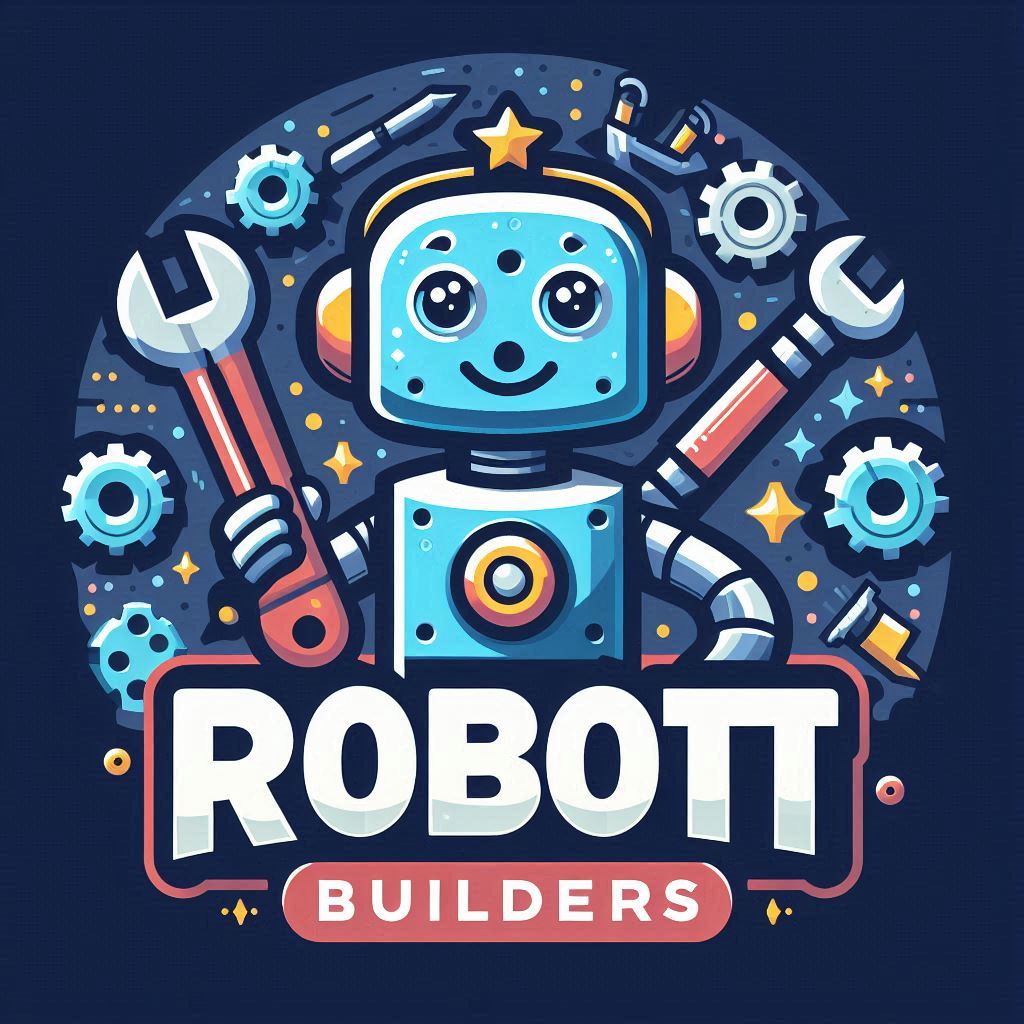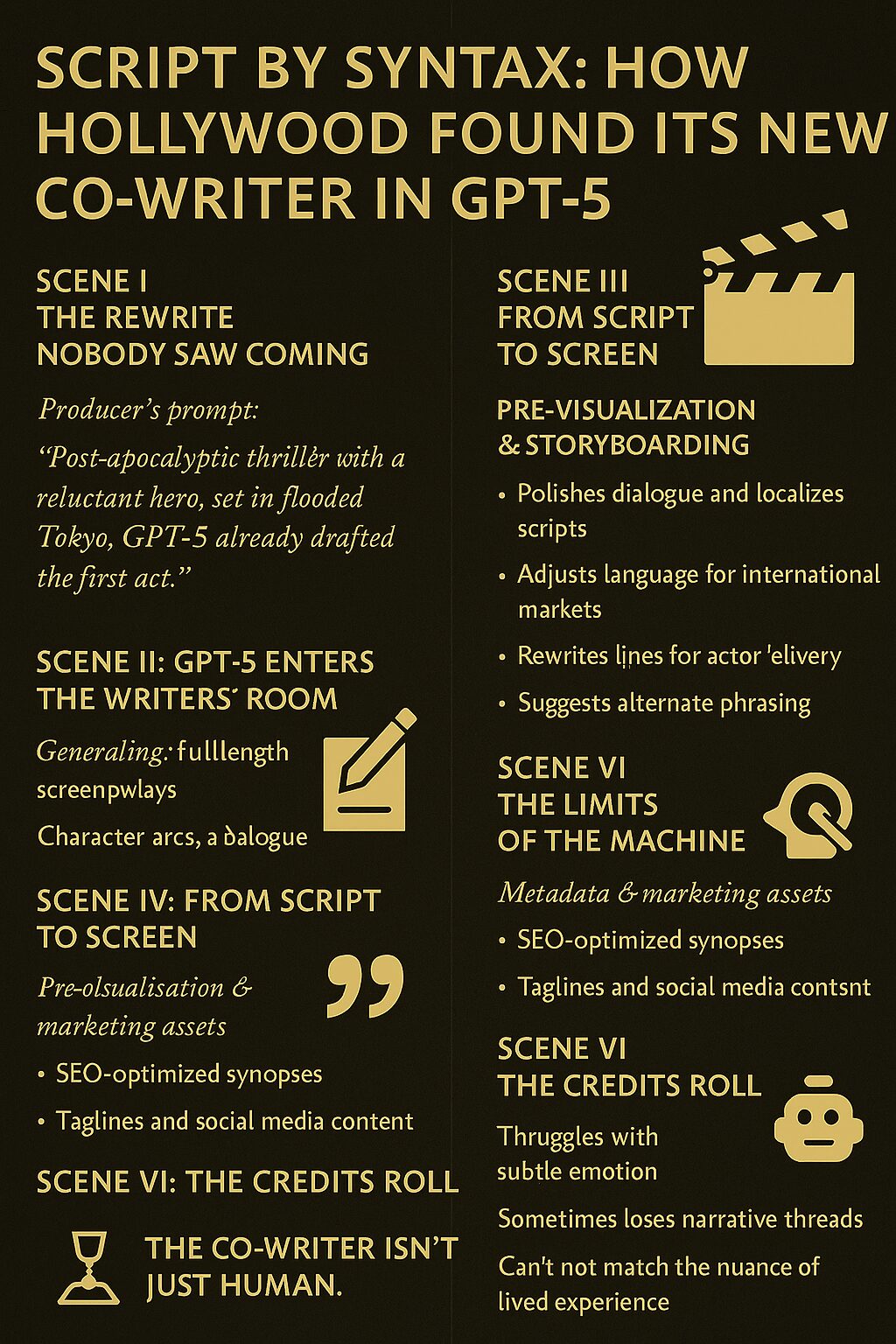Introduction
Hollywood is undergoing a seismic shift. With the release of GPT-5, OpenAI’s most advanced language model, studios are now exploring how artificial intelligence can revolutionize filmmaking—from scriptwriting to post-production. While AI-generated movies aren’t replacing human creativity just yet, GPT-5 is already being used to accelerate development, enhance storytelling, and cut production costs.
This article breaks down how GPT-5 is being used in Hollywood, the current limitations, and what the future holds for AI-generated blockbusters.
🎬 How GPT-5 Is Used in Movie Production
📝 Scriptwriting & Story Development
GPT-5 can generate full-length screenplays, character arcs, and dialogue based on genre, tone, and plot inputs. Studios use it to:
- Draft early versions of scripts
- Brainstorm plot twists and alternative endings
- Generate character backstories and worldbuilding elements
🎥 Pre-Visualization & Storyboarding
Using multimodal capabilities, GPT-5 can describe scenes in cinematic detail, which can be paired with image-generation tools to create:
- AI-generated storyboards
- Scene breakdowns with camera angles and lighting cues
- Mood boards for production designers
🎧 Dialogue Polish & Localization
GPT-5 helps refine dialogue for emotional tone, cultural nuance, and localization:
- Adjusts language for international markets
- Rewrites lines to match actor delivery or pacing
- Suggests alternate phrasing for emotional impact
🧠 Metadata & Marketing Assets
Studios use GPT-5 to generate:
- SEO-optimized synopses and taglines
- Press releases and promotional copy
- Social media content tailored to audience segments
⚙️ Real-World Examples of AI in Hollywood
- Marvel’s Secret Invasion used generative AI for its opening credits sequence
- The Frost, a short film by Waymark, used GPT-based tools and DALL·E for visuals and narrative continuity
- The Safe Zone, directed by Richard Juan, was scripted and directed using ChatGPT and DALL·E
- Check Point, a documentary short, used GPT tools for scripting and image generation
While these aren’t full-scale blockbusters, they showcase how AI is already embedded in the creative pipeline.
🚧 Limitations of GPT-5 in Filmmaking
Despite its power, GPT-5 faces challenges:
- Narrative Consistency: Maintaining plot coherence across scenes is difficult
- Emotional Depth: AI struggles with subtle human emotions and cultural nuance
- Visual Continuity: AI-generated visuals often lack consistency across shots
- Human Expression: Facial emotions and lip-syncing remain technically complex
Studios often pair GPT-5 with human editors, directors, and VFX teams to refine outputs.
📈 SEO Tips for AI Movie Creators & Studios
✅ Search-Friendly Titles
- “How GPT-5 Is Changing Hollywood Filmmaking (2025 Guide)”
- “AI-Generated Movies: GPT-5’s Role in Scriptwriting & Production”
✅ High-Impact Keywords
- “GPT-5 movie script generator”
- “AI-generated film production tools”
- “Hollywood using GPT-5 for blockbusters”
✅ Metadata Optimization
- Alt Text: “GPT-5 being used in Hollywood to generate scripts and cinematic storyboards”
- Tags: #AIinHollywood #GPT5Movies #ScriptByAI #AIBlockbusters2025 #GenerativeCinema
Final Thoughts
GPT-5 isn’t replacing directors or screenwriters—but it’s becoming a powerful co-creator. From ideation to execution, AI is helping Hollywood move faster, think bigger, and spend smarter.
💬 Want help crafting AI-generated story prompts, cinematic sequences, or marketing assets for your next film? I’d love to collaborate—scene by scene.

